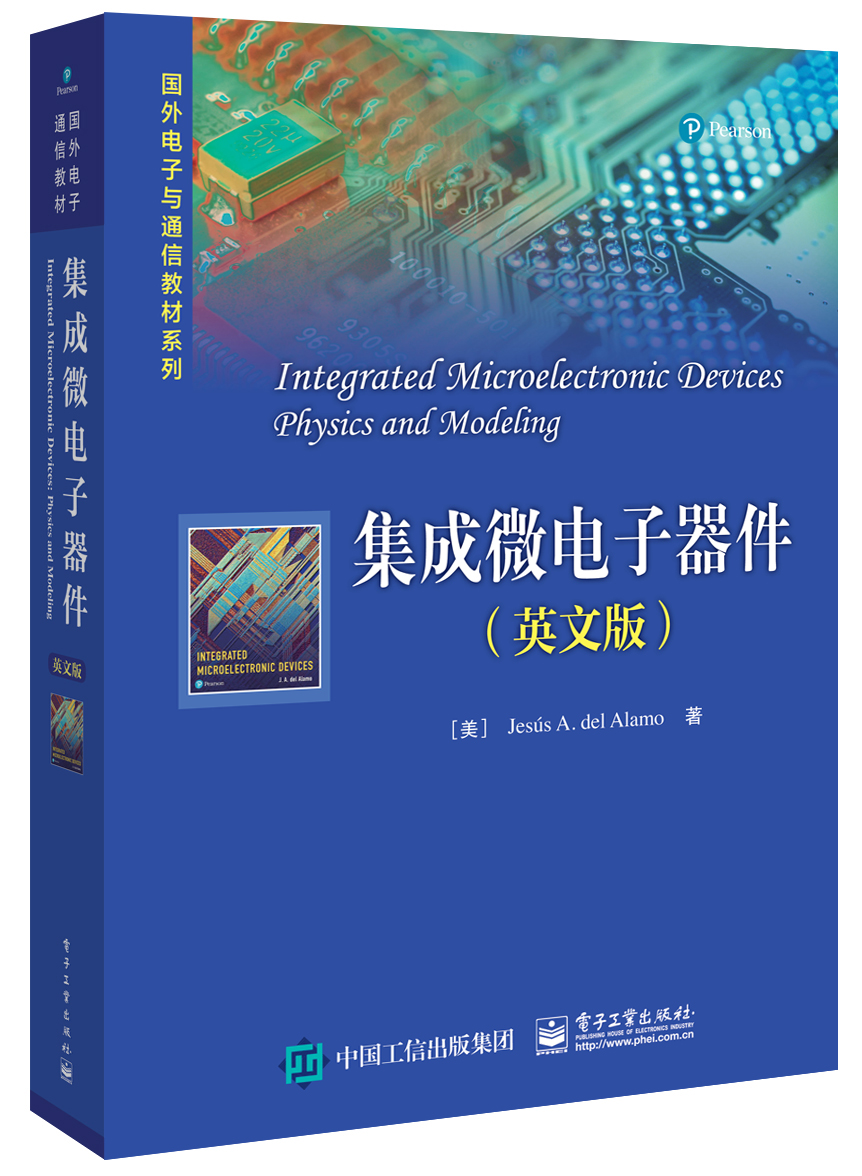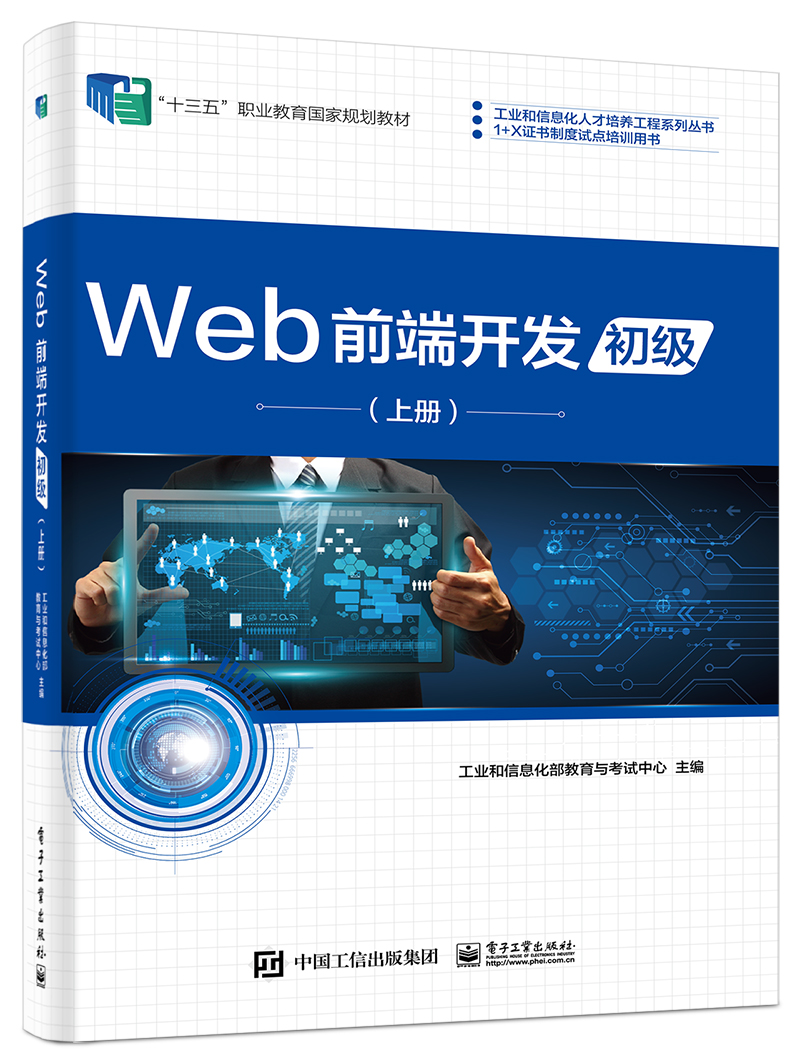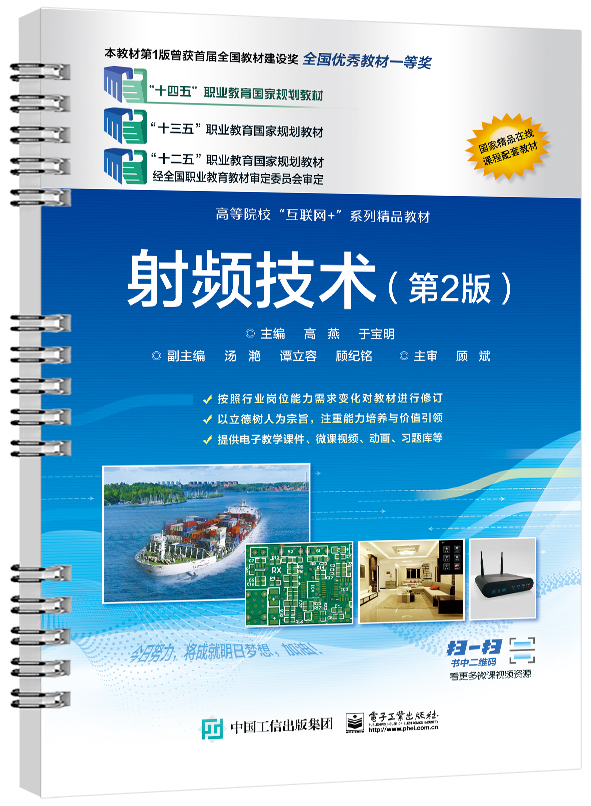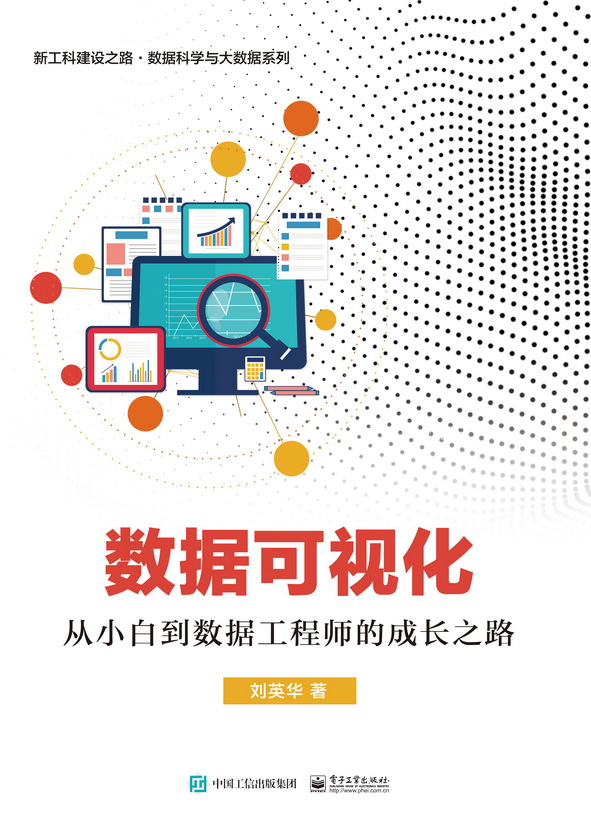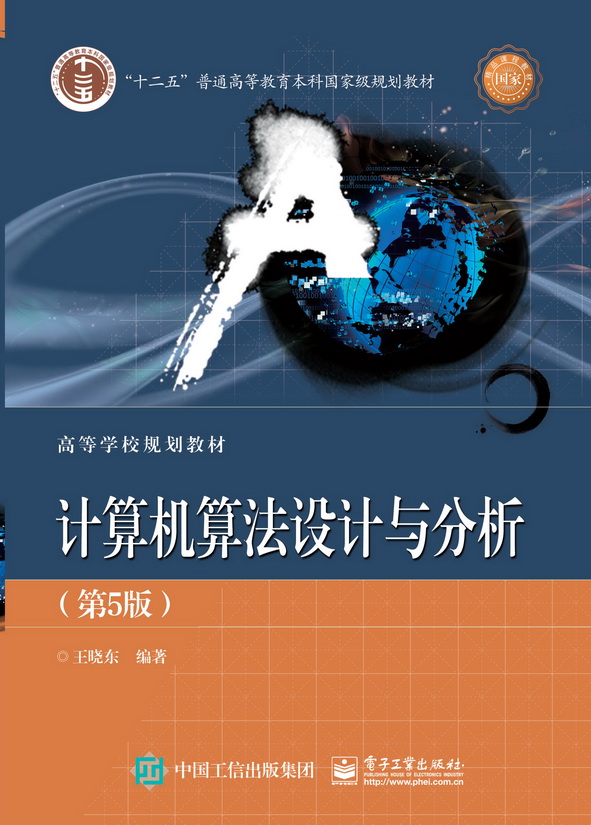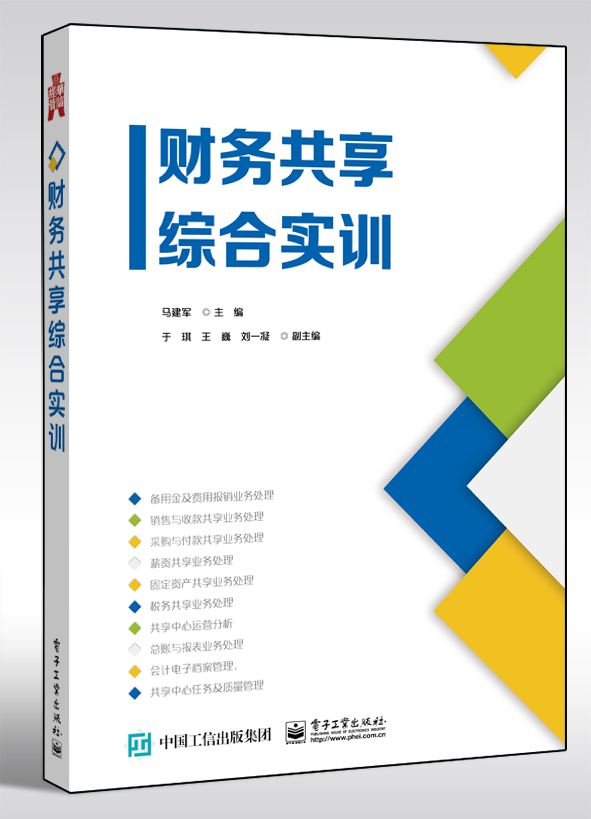集成微电子器件(英文版)
丛 书 名:
国外电子与通信教材系列
作 译 者:(美)吉泽斯·A. 德尔阿拉莫
出 版 日 期:2019-03-01
书 代 号:G0344030
I S B N:9787121344039
图书简介:
本书的重要特点是以与现代集成微电子学相关的方式介绍半导体器件操作的基本原理,不涉及任何光学或者功率器件,重点强调集成微电子器件的频率响应、布局、集合效应、寄生问题以及建模等。本书分为两部分,合计11章。第一部分(第1章至第5章)介绍半导体物理的基本原理,包括电子和光子及声子、平衡状态下的载流子统计学、载流子产生与复合、载流子漂移和扩散、载流子运动以及PN结二极管,涵盖能带结构、电子统计、载流子产生与复合、漂移和扩散、多数载流子和少数载流子等相关知识。第二部分(第6章至第11章)分别讲解肖特基二极管与欧姆接触、硅表面与金属氧化物半导体结构、长金属氧化物半导体场效应晶体管、短金属氧化物半导体场效应晶体管以及双极结晶体管,详细探讨各种器件的物理及操作原理。各章涵盖了不理想性、二阶效应以及其他与实际器件相关的重要因素。全书的内容架构有利于学生的理论知识学习与未来工作实践的衔接过渡。
-
配 套 资 源
-
图 书 内 容
内容简介
本书的重要特点是以与现代集成微电子学相关的方式介绍半导体器件操作的基本原理,不涉及任何光学或者功率器件,重点强调集成微电子器件的频率响应、布局、集合效应、寄生问题以及建模等。本书分为两部分,合计11章。第一部分(第1章至第5章)介绍半导体物理的基本原理,包括电子和光子及声子、平衡状态下的载流子统计学、载流子产生与复合、载流子漂移和扩散、载流子运动以及PN结二极管,涵盖能带结构、电子统计、载流子产生与复合、漂移和扩散、多数载流子和少数载流子等相关知识。第二部分(第6章至第11章)分别讲解肖特基二极管与欧姆接触、硅表面与金属氧化物半导体结构、长金属氧化物半导体场效应晶体管、短金属氧化物半导体场效应晶体管以及双极结晶体管,详细探讨各种器件的物理及操作原理。各章涵盖了不理想性、二阶效应以及其他与实际器件相关的重要因素。全书的内容架构有利于学生的理论知识学习与未来工作实践的衔接过渡。图书详情
ISBN:9787121344039开 本:16开页 数:864字 数:1797.0本书目录
1 Electrons, Photons, and Phonons 电子、光子和声子 1.1 Selected Concepts of Quantum Mechanics 量子力学的基本概念 1.1.1 The dual nature of the photon 光子的二重性 1.1.2 The dual nature of the electron 电子的二重性 1.1.3 Electrons in confined environments 密闭环境中的电子特性 1.2 Selected Concepts of Statistical Mechanics 统计力学的基本概念 1.2.1 Thermal motion and thermal energy 热运动和热能 1.2.2 Thermal equilibrium 热平衡 1.2.3 Electron statistics 电子统计特性 1.3 Selected Concepts of Solid-State Physics 固体物理的基本概念 1.3.1 Bonds and bands 化学键和能带 1.3.2 Metals, insulators, and semiconductors 金属、绝缘体和半导体 1.3.3 Density of states 态密度 1.3.4 Lattice vibrations: phonons 晶格振动:声子 1.4 Summary 小结 1.5 Further reading 延展阅读 Problems 习题 2 Carrier Statistics in Equilibrium 平衡状态下的载流子统计特性 2.1 Conduction and Valence Bands; Bandgap; Holes 导带和价带,带隙,空穴 2.2 Intrinsic Semiconductor 本征半导体 2.3 Extrinsic Semiconductor 非本征半导体 2.3.1 Donors and acceptors 施主和受主 2.3.2 Charge neutrality 电中性特点 2.3.3 Equilibrium carrier concentration in a doped semiconductor 掺杂半导体中的平衡载流子浓度 2.4 Carrier Statistics in Equilibrium 平衡状态下的载流子统计特性 2.4.1 Conduction and valence band density of states 导带和价带的态密度 2.4.2 Equilibrium electron concentration 平衡电子浓度 2.4.3 Equilibrium hole concentration 平衡空穴浓度 2.4.4 np product in equilibrium 平衡状态下的np积 2.4.5 Location of Fermi level 费米能级的位置 2.5 Summary 小结 2.6 Further Reading 延展阅读 AT2.1 Temperature Dependence of the Bandgap 带隙的温度依存性 AT2.2 Selected Properties of the Fermi-Dirac Integral 费米–狄拉克积分的基本特性 AT2.3 Approximations for Strongly Degenerate Semiconductor 强简并半导体的数学近似 AT2.4 Statistics of Donor and Acceptor Ionization 施主和受主电离的数学统计 AT2.5 Carrier Freeze-Out 载流子束缚态 AT2.6 Heavy-Doping Effects 重掺杂效应 AT2.6.1 The Mott transition Mott转移 AT2.6.2 Bandgap narrowing 带隙变窄 Problems 习题 3 Carrier Generation and Recombination 载流子的产生与复合 3.1 Generation and Recombination Mechanisms 产生与复合机制 3.2 Thermal Equilibrium: Principle of Detailed Balance 热平衡:精细平衡原理 3.3 Generation and Recombination Rates in Thermal Equilibrium 热平衡下的产生率与复合率 3.3.1 Band-to-band optical generation and recombination 带间光产生和光复合 3.3.2 Auger generation and recombination 俄歇产生与复合 3.3.3 Trap-assisted thermal generation and recombination 陷阱辅助的热产生与复合 3.4 Generation and Recombination Rates Outside Equilibrium 非平衡条件下的产生与复合 3.4.1 Quasi-neutral low-level injection; recombination lifetime 准中性低浓度注入,复合寿命 3.4.2 Extraction; generation lifetime 提取和产生寿命 3.5 Dynamics of Excess Carriers in Uniform Situations 均匀条件下的过剩载流子动力学 3.5.1 Example 1: Turn-on transient 例1:开瞬态 3.5.2 Example 2: Turn-off transient 例2:关瞬态 3.5.3 Example 3: A pulse of light 例3:一个光脉冲 3.6 Surface Generation and Recombination 表面产生与复合 3.7 Summary 小结 3.8 Further Reading 延展阅读 AT3.1 Shockley–Read–Hall Model 肖克利–里德–霍尔模型 AT3.1.1 Recombination lifetime 复合寿命 AT3.1.2 Generation lifetime 产生寿命 AT3.2 High-Level Injection 高浓度注入 Problems 习题 4 Carrier Drift and Diffusion 载流子的漂移和扩散 4.1 Thermal Motion 热运动 4.1.1 Thermal velocity 热运动速率 4.1.2 Scattering 散射 4.2 Drift 漂移 4.2.1 Drift velocity 漂移速率 4.2.2 Velocity saturation 速率饱和 4.2.3 Drift current 漂移电流 4.2.4 Energy band diagram under electric field 电场作用下的能带图 4.3 Diffusion 扩散 4.3.1 Fick’s first law 菲克第一定律 4.3.2 The Einstein relation 爱因斯坦关系 4.3.3 Diffusion current 扩散电流 4.4 Transit Time 渡越时间 4.5 Nonuniformly Doped Semiconductor in Thermal Equilibrium 热平衡下的非均匀掺杂半导体 4.5.1 Gauss’law 高斯定律 4.5.2 The Boltzmann relations 玻尔兹曼关系 4.5.3 Equilibrium carrier concentration 平衡载流子浓度 4.6 Quasi-Fermi Levels and Quasi-Equilibrium 准费米能级与准平衡态 4.7 Summary 小结 4.8 Further Reading 延展阅读 AT4.1 Selected Properties of the Gamma Function 伽马函数的基本性质 AT4.2 Hot Carrier Effects 热载流子效应 AT4.2.1 Energy relaxation versus momentum relaxation 能量弛豫和动量弛豫 AT4.2.2 Hot-electron transport 热电子输运 AT4.2.3 Impact ionization 碰撞电离 Problems 习题 5 Carrier Flow 载流子运动 5.1 Continuity Equations 连续性方程 5.2 Surface Continuity Equations 表面连续性方程 5.2.1 Free surface 自由表面 5.2.2 Ohmic contact 欧姆接触 5.3 Shockley Equations 肖克利公式 5.4 Simplifications of Shockley Equations to One-Dimensional Quasi-Neutral Situations 一维准中性条件下的肖克利公式简化 5.5 Majority Carrier Situations 多数载流子 5.5.1 Example 1: Semiconductor bar under voltage 例1:电压下的半导体棒 5.5.2 Example 2: Integrated resistor 例2:集成电阻 5.6 Minority Carrier Situations 少数载流子 5.6.1 Example 3: Diffusion and bulk recombination in a “long” bar 例3:“长”棒中的扩散和体复合 5.6.2 Example 4: Diffusion and surface recombination in a “short” bar 例4:“短”棒中的扩散和表面复合 5.6.3 Length scales of minority carrier situations 少数载流子的长度效应 5.7 Dynamics of Majority Carrier Situations 多数载流子的动力学特性 5.8 Dynamics of Minority Carrier Situations 少数载流子的动力学特性 5.8.1 Example 5: Transient in a bar with S=∞ 例5:S=∞时,半导体棒的瞬态特性 5.9 Transport in Space-Charge and High-Resistivity Regions 空间电荷和高阻区中的输运 5.9.1 Example 6: Drift in a high-resistivity region under external electric field 例6:外电场作用下的高阻区漂移 5.9.2 Comparison between SCR and QNR transport 空间电荷区(SCR)与准中性区(QNR)输运的比较 5.10 Carrier Multiplication and Avalanche Breakdown 载流子倍增和雪崩击穿 5.10.1 Example 7: Carrier multiplication in a high-resistivity region with uniform electric field 例7:均匀电场作用下的高阻区载流子倍增 5.11 Summary 小结 5.12 Further Reading 延展阅读 AT5.1 Continuity Equations in Integral Form 积分形式的连续方程 AT5.2 Dielectric Relaxation 介电弛豫 AT5.3 Advanced Topics Regarding Minority Carrier Situations 少数载流子条件下的复杂难题 AT5.3.1 Advanced Example 1: Diffusion, drift, and recombination in a short bar with internal field 难题示例1:内电场作用下的短棒半导体中的载流子漂移、扩散和复合 AT5.3.2 More on length scales of minority carrier situations 少数载流子条件下的长度效应 AT5.3.3 Advanced Example 2: Transient in a bar with finite surface recombination 难题示例2:有限表面复合下的棒状半导体瞬态特性 AT5.4 Carrier Multiplication and Avalanche Breakdown Under Nonuniform Electric Field 非均匀电场作用下的载流子倍增和雪崩击穿 Problems 习题 6 PN Junction Diode pn结二极管 6.1 The Ideal PN Junction Diode 理想pn结二极管 6.2 Ideal PN Junction in Thermal Equilibrium 热平衡下的理想pn结二极管 6.3 Current–Voltage Characteristics of the Ideal PN Diode 理想pn结二极管的电流–电压特性 6.3.1 Electrostatics under bias 偏置电压作用下的静电学特性 6.3.2 I-V characteristics: qualitative discussion I-V 特性:定性讨论 6.3.3 I-V characteristics: quantitative models I-V 特性:定量模型 6.4 Charge–Voltage Characteristics of Ideal PN Diode 理想pn结二极管的电荷–电压特性 6.4.1 Depletion charge 耗尽电荷 6.4.2 Minority carrier charge 少数载流子电荷 6.5 Equivalent Circuit Models of the Ideal PN Diode 理想pn结二极管的等效电路模型 6.6 Nonideal and Second-Order Effects 非理想条件和二阶效应 6.6.1 Short diode 短二极管 6.6.2 Space-charge generation and recombination 空间电荷的产生与复合 6.6.3 Series resistance 串联电阻 6.6.4 Breakdown voltage 击穿电压 6.6.5 Nonuniform doping distributions 非均匀掺杂分布 6.6.6 High-injection effects 高注入效应 6.7 Integrated PN Diode 集成pn结二极管 6.7.1 Isolation 隔离层 6.7.2 Series resistance 串联电阻 6.7.3 High–low junction 高低结 6.8 Summary 小结 6.9 Further Reading 延展阅读 AT6.1 Validity of the depletion approximation 耗尽近似的有效性 AT6.2 Quasi-neutral region resistance in ideal diode 理想二极管中的准中性区电阻 AT6.3 Equivalent circuit model for circuit design 电路设计中的等效电路模型 AT6.4 Switching characteristics of PN diode pn结二极管的开关特性 Problems 习题 7 Schottky Diode and Ohmic Contact 肖特基二极管和欧姆接触 7.1 The Ideal Schottky Diode 理想肖特基二极管 7.2 Ideal Schottky Diode in Thermal Equilibrium 热平衡下的理想肖特基二极管 7.2.1 A simpler system: a metal–metal junction 一个简化系统:金属–金属结 7.2.2 Energy band lineup of metal–semiconductor junction 金属–半导体结的能带分布 7.2.3 Electrostatics of metal–semiconductor junction in equilibrium 平衡状态下的金属–半导体结静电学特性 7.3 Current–Voltage Characteristics of Ideal Schottky Diode 理想肖特基二极管的电流–电压特性 7.3.1 Electrostatics under bias 偏置电压作用下的静电学特性 7.3.2 I-V characteristics: qualitative discussion I-V 特性:定性讨论 7.3.3 I-V characteristics: thermionic emission model I-V 特性:定量模型 7.4 Charge–Voltage Characteristics of Ideal Schottky Diode 理想肖特基二极管的电荷–电压特性 7.5 Equivalent Circuit Models for the Ideal Schottky Diode 理想肖特基二极管的等效电路模型 7.6 Nonideal and Second-Order Effects 非理想条件和二阶效应 7.6.1 Series resistance 串联电阻 7.6.2 Breakdown voltage 击穿电压 7.7 Integrated Schottky Diode 集成肖特基二极管 7.8 Ohmic Contacts 欧姆接触 7.8.1 Lateral ohmic contact: transmission-line model 侧向欧姆接触:传输线模型 7.8.2 Boundary conditions imposed by ohmic contacts 欧姆接触下的边界条件 7.9 Summary 小结 7.10 Further Reading 延展阅读 AT7.1 Nonideal Schottky barrier height of metal–semiconductor junctions 金属–半导体结的非理想肖特基势垒高度 AT7.2 Drift-diffusion model for I-V characteristics I-V 特性的漂移–扩散模型 AT7.3 Equivalent circuit model of Schottky diode for circuit design 电路设计中的肖特基二极管等效电路模型 AT7.4 Switching characteristics of Schottky diode 肖特基二极管的开关特性 Problems 习题 8 The Si Surface and the Metal-Oxide-Semiconductor Structure 硅表面和金属-氧化物-半导体结构 8.1 The Semiconductor Surface 半导体表面 8.2 The Ideal Metal–Oxide–Semiconductor Structure 理想的金属–氧化物–半导体结构 8.3 The Ideal Metal–Oxide–Semiconductor Structure at Zero Bias 零偏置下的理想金属–氧化物–半导体结构 8.3.1 General relations for the electrostatics of the ideal MOS structure 理想MOS结构的一般静电学特性 8.3.2 Electrostatic of the MOS structure under zero bias 零偏置下的MOS结构静电学特性 8.4 The Ideal Metal–Oxide–Semiconductor Structure Under Bias 偏置作用下的理想金属–氧化物–半导体结构 8.4.1 Depletion 耗尽 8.4.2 Flatband 平带 8.4.3 Accumulation 积累 8.4.4 Threshold 阈值 8.4.5 Inversion 反转 8.4.6 Summary of charge–voltage characteristics 电荷–电压特性的小结 8.5 Dynamics of the MOS Structure MOS结构的动力学特性 8.5.1 Quasi-static C-V characteristics 准静态C-V 特性 8.5.2 High-frequency C-V characteristics 高频C-V 特性 8.5.3 Deep depletion 深耗尽态 8.6 Weak Inversion and the Subthreshold Regime 弱反转和亚阈值区 8.7 Three-Terminal MOS Structure 三端口MOS结构 8.8 Summary 小结 8.9 Further Reading 延展阅读 AT8.1 Surface states 表面态 AT8.2 Nonideal effects in MOS structure MOS结构中的非理想条件 AT8.2.1 Oxide charge 氧化物电荷 AT8.2.2 Interface states 界面态 AT8.3 Poisson–Boltzmann formulation of MOS electrostatics MOS静电特性的泊松–玻尔兹曼公式 AT8.3.1 Approximations for depletion 耗尽近似 AT8.3.2 Approximations for accumulation 积累近似 AT8.3.3 Approximations for inversion 反转近似 Problems 习题 9 The “ Long” Metal-Oxide-Semiconductor Field-Effect Transistor “长”金属-氧化物-半导体场效应晶体管 9.1 The Ideal MOSFET 理想的金属–氧化物–半导体场效应晶体管 9.2 Qualitative Operation of the Ideal MOSFET 理想MOSFET的定性运算 9.3 Inversion Layer Transport in the Ideal MOSFET 理想MOSFET反转层的输运特性 9.4 Current–Voltage Characteristics of the Ideal MOSFET 理想MOSFET的电流–电压特性 9.4.1 The cut-off regime 截止模式 9.4.2 The linear regime 线性模式 9.4.3 The saturation regime 饱和模式 9.4.4 DC large-signal equivalent-circuit model of ideal MOSFET 直流大信号的等效电路模型 9.4.5 Energy band diagrams 能带图 9.5 Charge–Voltage Characteristics of the Ideal MOSFET 理想MOSFET的电荷–电压特性 9.5.1 Depletion charge 耗尽电荷 9.5.2 Inversion charge 反转电荷 9.6 Small-Signal Behavior of Ideal MOSFET 理想MOSFET的小信号特性 9.6.1 Small-signal equivalent circuit model of ideal MOSFET 小信号等效电路模型 9.6.2 Short-circuit current-gain cut-off frequency, fT, of idealMOSFET in saturation 饱和状态下的短路“电流-增益”截止频率fT 9.7 Nonideal Effects in MOSFET MOSFET中的非理想条件 9.7.1 Body effect 体效应 9.7.2 Effect of back bias 反向偏置效应 9.7.3 Channel-length modulation 沟道长度调制 9.7.4 The subthreshold regime 亚阈值模式 9.7.5 Source and drain resistance 源电阻和漏电阻 9.8 Summary 小结 9.9 Further Reading 延展阅读 AT9.1 A More Detailed Study of Inversion Layer Transport 反转层输运的更详细研究 AT9.1.1 The sheet-charge approximation 薄层电荷近似 AT9.1.2 The gradual-channel approximation 渐进沟道近似 AT9.1.3 Validity of approximations 近似的有效性 Problems 习题 10 The “Short ” Metal-Oxide-Semiconductor Field-Effect Transistor “短”金属-氧化物-半导体场效应晶体管 10.1 MOSFET Short-Channel Effects: Transport MOSFET短沟道效应:输运 10.1.1 Mobility degradation 迁移率下降 10.1.2 Velocity saturation 速度饱和 10.2 MOSFET Short-Channel Effects: Electrostatics MOSFET短沟道效应:静电学特性 10.2.1 Threshold voltage dependence on gate length: VT rolloff 阈值电压与栅极长度的关系:VT滚降 10.2.2 Threshold voltage dependence on VDS: drain-induced barrier lowering (DIBL) 阈值电压与VDS的关系:漏极致势垒降低 10.2.3 Subthreshold swing dependence on gate length and VDS 亚阈值波动与栅极长度和VDS的关系 10.3 MOSFET Short-Channel Effects: Gate Stack Scaling MOSFET短沟道效应:栅堆叠缩尺效应 10.3.1 Gate capacitance 栅电容 10.3.2 Gate leakage current 栅漏电流 10.4 MOSFET High-Field Effects MOSFET高场效应 10.4.1 Electrostatics of velocity saturation region 速率饱和区的静电学特性 10.4.2 Impact ionization and substrate current 碰撞电离和衬底电流 10.4.3 Output conductance 输出电导 10.4.4 Gate-induced drain leakage 栅致漏极泄漏 10.5 MOSFET Scaling MOSFET缩尺理论 10.5.1 The MOSFET as a switch 用作开关的MOSFET 10.5.2 Constant field scaling of the ideal MOSFET 理想MOSFET的恒电场缩尺效应 10.5.3 Constant voltage scaling of the ideal MOSFET 理想MOSFET的恒电压缩尺效应 10.5.4 Generalized scaling of short MOSFETs 短MOSFET的通用缩尺效应 10.5.5 MOSFET scaling: a historical perspective MOSFET缩尺理论:历史回顾 10.5.6 Evolution of MOSFET design MOSFET设计的演化 10.6 Summary 小结 10.7 Further Reading 延展阅读 AT10.1 Electrostatics of Short MOSFET Around Threshold 阈值附近的短MOSFET的静电学特性 AT10.2 Electrostatics of the Velocity Saturation Region 速率饱和区的静电学特性 Problems 习题 11 The Bipolar Junction Transistor 双极结型晶体管 11.1 The Ideal BJT 理想的双极结型晶体管(BJT) 11.2 Current–Voltage Characteristics of the Ideal BJT 理想BJT的电流–电压特性 11.2.1 The forward-active regime 正向有源模式 11.2.2 The reverse regime 反向模式 11.2.3 The cut-off regime 截止模式 11.2.4 The saturation regime 饱和模式 11.2.5 Output I–V characteristics 输出I-V特性 11.3 Charge–Voltage Characteristics of Ideal BJT 理想BJT的电荷–电压特性 11.3.1 Depletion charge 耗尽电荷 11.3.2 Minority carrier charge 少数载流子电荷 11.4 Small-Signal Behavior of the Ideal BJT in Forward-Active Regime 正向有源模式下理想BJT的小信号特性 11.4.1 Small-signal equivalent circuit model 小信号等效电路模型 11.4.2 Common-emitter short-circuit current-gain cut-off frequency, fT 共发射极的短路“电流–增益”截止频率fT 11.5 Nonideal Effects in BJT BJT中的非理想条件 11.5.1 Base-width modulation 基区宽度调制 11.5.2 Emitter-base space-charge region recombination 射极–基极的空间电荷区复合 11.5.3 Impact ionization 碰撞电离 11.5.4 Breakdown voltage 击穿电压 11.5.5 High collector current effects 高集电极电流效应 11.5.6 Parasitic resistance 寄生电阻 11.5.7 Nonuniform doping levels 非均匀掺杂水平 11.6 Evolution of BJT Design BJT设计的演化 11.7 Summary 小结 11.8 Further Reading 延展阅读 AT11.1 Bipolar issues in MOSFETS MOSFET中的双极问题 AT11.1.1 Latch-up 闩锁效应 AT11.1.2 Floating-body effects in SOI MOSFETs SOI MOSFET中的浮体效应 AT11.1.3 MOSFET breakdown and snap-back MOSFET的击穿和负阻 Problems 习题 A Table of Fundamental Physical Constants 基本物理常数 B Table of Important Material Parameters of Si, GaAs, and SiO2 at 300 K Si,GaAs和SiO2在300 K时的重要材料参数 C Table of Acronyms 缩略语 D Table of Taylor Series Expansions 泰勒级数展开式 E Analytical Expressions for Important Material Parameters of Si at 300 K Si在300 K时的重要材料参数的解析表达式 F Solutions to Selected Problems 部分习题参考答案 Index 索引展开前 言
Preface Judging by its age, now beyond 50 years old, one would think that microelectronics is a mature engineering discipline. Yet, its youthful exponential growth and its dramatic impact on human society continue unabated. For those of us that have been given the privilege of playing a role in this amazing endeavor, it has been an exhilarating experience. For years it was predicted that the relentless down scaling of transistor dimensions will hit a “fundamental limit” beyond which traditional device physics will be irreparably upset and progress will stall. Fortunately, semiconductor technologists and device engineers have been too busy to listen to the doomsayers. Innovative solutions to the challenges that continued to emerge were identified. Old taboos and preconceptions had to go by the wayside, and new materials needed to be brought to bear but progress never slowed down. The “microelectronics revolution” is perhaps the best exponent of human creativity and resourcefulness that there has ever been. While recently, expressions of concern about the impending end of “Moore’s Law” have grown louder and the path forward with transistor scaling is not entirely apparent, it is very clear that CMOS (complementary metal–oxide semiconductor, a logic circuit family based on metal–oxide–semiconductor field-effect transistors) in whatever form it will take, will continue to be the backbone of computation, communications, power management, medical devices and many other kinds of systems for years to come. Also clear is that going forward, a richer set of technological options will need to be investigated: new materials, new structures, new geometries, and even new physics. In this context, indepth understanding of semiconductor fundamentals and device physics will be more valuable than ever. It is in this regard that this book attempts to fill an important gap in the academic literature. While there are excellent texts on semiconductor device physics in themarket, there is a need for a rigorous description that is relevant to modern nanoelectronics. In recent times, for instance, the so-called “extrinsic effects” or “parasitics” have come to play a dominant role in device operation. Moreover, device physics such as impact ionization and breakdown represent significant considerations in nanoscale device design. Another example is the role of device layout on device performance metrics that is of increasing relevance. This book additionally aims to provide a realistic technology context for the main streamdevices: the metal–oxide–semiconductor field-effect transistor (MOSFET) and the bipolar junction transistor (BJT). This book is based on my experience in teaching 6.720J/3.43J Integrated Microelectronic Devices, a semester-long graduate student subject jointly offered in the Departments of Electrical Engineering and Computer Science (EECS) and Materials Science and Engineering (MS&E) at Massachusetts Institute of Technology (MIT). Typically, the class is composed of graduate students in EECS, Materials Science, Mechanical Engineering, Chemical Engineering and Physics plus a few seniors in the same departments. Graduate students in EECS and MS&E with interest in semiconductor materials and devices are strongly encouraged to take this subject their very first semester at MIT. While the book originated in a graduate course at MIT, it has been constructed to be productively used in an advanced undergraduate subject at the junior/senior level, as explained below. The central goal of this book is to present the fundamentals of semiconductor device operation with relevance to modern integrated microelectronics (as opposed to, say, photonics, energy conversion devices, or power electronics). This means that no optical devices nor power devices of any kind are described. In contrast, emphasis is devoted to frequency response, layout, geometrical effects, parasitic issues and modeling in integrated microelectronics devices (transistors and diodes). In spite of this focus, the concepts learned here are highly applicable in other device contexts. This book should be a great resource for a broad range of students with a diverse set of interests. There are two distinct parts to this book. The first five chapters introduce fundamental aspects of semiconductor physics pertaining to microelectronic devices: band structure, electron statistics, generation and recombination, drift and diffusion, and minority and majority carrier situations. Each chapter gives in its main body a general description suitable for a junior/senior-level or a first-year graduate course. These chapters also include at the end a number of advanced topics that can be selected individually to provide further depth. These can be the basis of a more advanced graduate subject. Six device chapters follow with a similar outline. After a brief introductory section, the main body of the chapter presents a first-order, physically meaningful description of device physics and operation of an “ideal device”. The ideal device is stripped down to its very essence, preserving the key physics, and is analyzed in a simple and intuitive way. The ideal device, constructed and studied this way, is therefore an excellent vehicle to learn device physics at the junior/senior level. One or more of the following sections present significant non idealities, important second-order effects and other considerations that are relevant in “real” devices. These are suitable topics for graduate courses. To some extent, teachers of graduate subjects will be able to pick and choose topics from these latter sections since they are rather independent of one another. Every chapter finishes with a set of advanced topics that contain more advanced graduate-level material also amenable to individual selection. With this organization, the proposed text should be suitable for a one-semester junior/senior-level course by selecting the front sections of selected chapters (1 through 9 should be a popular set). At the same time, it could be used in a two-semester senior-level or a graduate-level course by taking advantage of the more advanced sections. In all cases, the book will provide plenty of reading material for personal study and future reference. As required background for students to follow a course based on this book, in addition to freshman and sophomore physics and math, is a sophomore/junior subject on microelectronic circuits (at a level such as Sedra & Smith’s Microelectronic Circuits). Specific essentials are basic linear and non-linear circuit understanding and an ability to work in the frequency domain. This book does not require previous knowledge of semiconductor device physics, quantum mechanics or statistical mechanics. It does however expect a certain degree of student sophistication in handling complexity, mathematical rigor, and physical intuition. This book will best serve students that have already taken a course that presents an integrated introductory view of devices and circuits, such as in Howe & Sodini’s Microelectronics: An Integrated Approach. This book would not have been possible without the help and support of many people. It was my MIT colleague Charles Sodini who encouraged me to launch this project in 1993 and gave me feedback and advice on its organization and on the content of many early chapters. Little did Charlie know, nor I, that this project would take the bulk of my career at MIT to complete. I inherited content and benefited from feedback and advice from several colleagues at MIT: Dimitri Antoniadis, Clifton Fonstad, Judy Hoyt, Tomás Palacios, and Stephen Senturia. The book includes specific materials generously contributed by a number of individuals: Phaedon Avouris, Douglas Buchanan, Massimo Fischetti, Matthew Fox, Paul Humphries, Sergei Krupenin,Wenjie Lu, Richard Martel, Samuel Mertens, Richard Molnar, Tassanee Payakapan, Brad Scharf, Shinichi Takagi, and Ling Xia. They are all identified at the appropriate location in the text. My teaching assistants and students in 6.720J/3.43J supported me and encouraged me in this project over the years in numerous ways. I want to single out (apologies if I forget significant contributions!): Pablo Acosta, Tracy Adams, James Fiorenza, Iliana Fujimori, Usha Gogineni, David Greenberg, Alex Guo, Donghyun Jin, Jungwoo Joh, Dong-Seup Lee, Jianqiang Lin, Jelena Madic, Dennis Ouma, Jorg Scholvin, James Teherani, Anita Villanueva, Niamh Waldron, Chagarn Wang, Ginger Wang, Shireen Warnock, Joyce Wu, Mehmet Yanik, and Xin Zhao. I have also benefited from comments and feedback from many colleagues at MIT and beyond. Among them, I want to thank Thomas Clark, Emmanuel Crabbé, Isik Kizilyalli, Jody Lapham, Terry Orlando and Markus Zahn. With many years in the making, this book would not have been possible without the teaching release and support of several department heads of EECS at MIT: Anantha Chandrakasan, Eric Grimson, John Guttag, Paul Penfield and Rafael Reif. Thanks are also due to the staff at Pearson and Prentice Hall that have supportedme through this project: Julie Bai, Scott Disanno, Tom Robbins, Shylaja Gattupalli, and Carole Snyder. My passion for semiconductors was ignited by the opportunity that Prof. Antonio Luque gave me to become engaged in his research program on solar cells when I was an undergraduate student at Universidad Politécnica de Madrid in Spain. My mentor at Politécnica, Dr. Javier Eguren, patiently guided me through the very first steps of my research career. My PhD advisor at Stanford University, Prof. Richard M. Swanson, further nurtured my love for semiconductor devices through his vivid and insightful explanations of device physics. I owe an immense debt of gratitude to all three of them for their confidence in me and their encouragement over the years. This book is dedicated to my sons, Diego, Paul, and Antoine. Writing it took a lot of time away from them. I hope they come to value the impact that this book can make on the careers of young people like themselves. This project has been sustained by the patience and encouragement of Sophie, my wife. I am grateful for her presence in my life! Jesús A. del Alamo展开作者简介
本书暂无作者简介 -
样 章 试 读
-
图 书 评 价 我要评论

